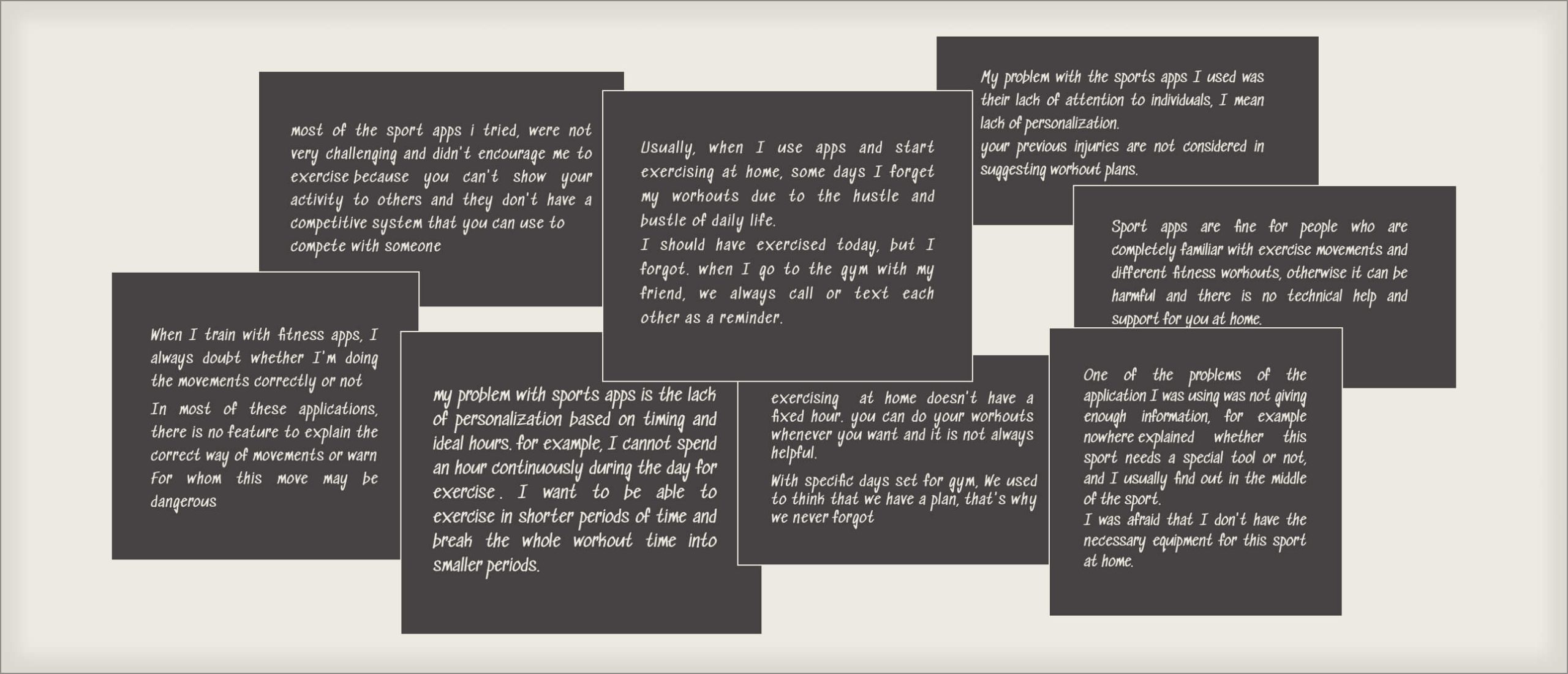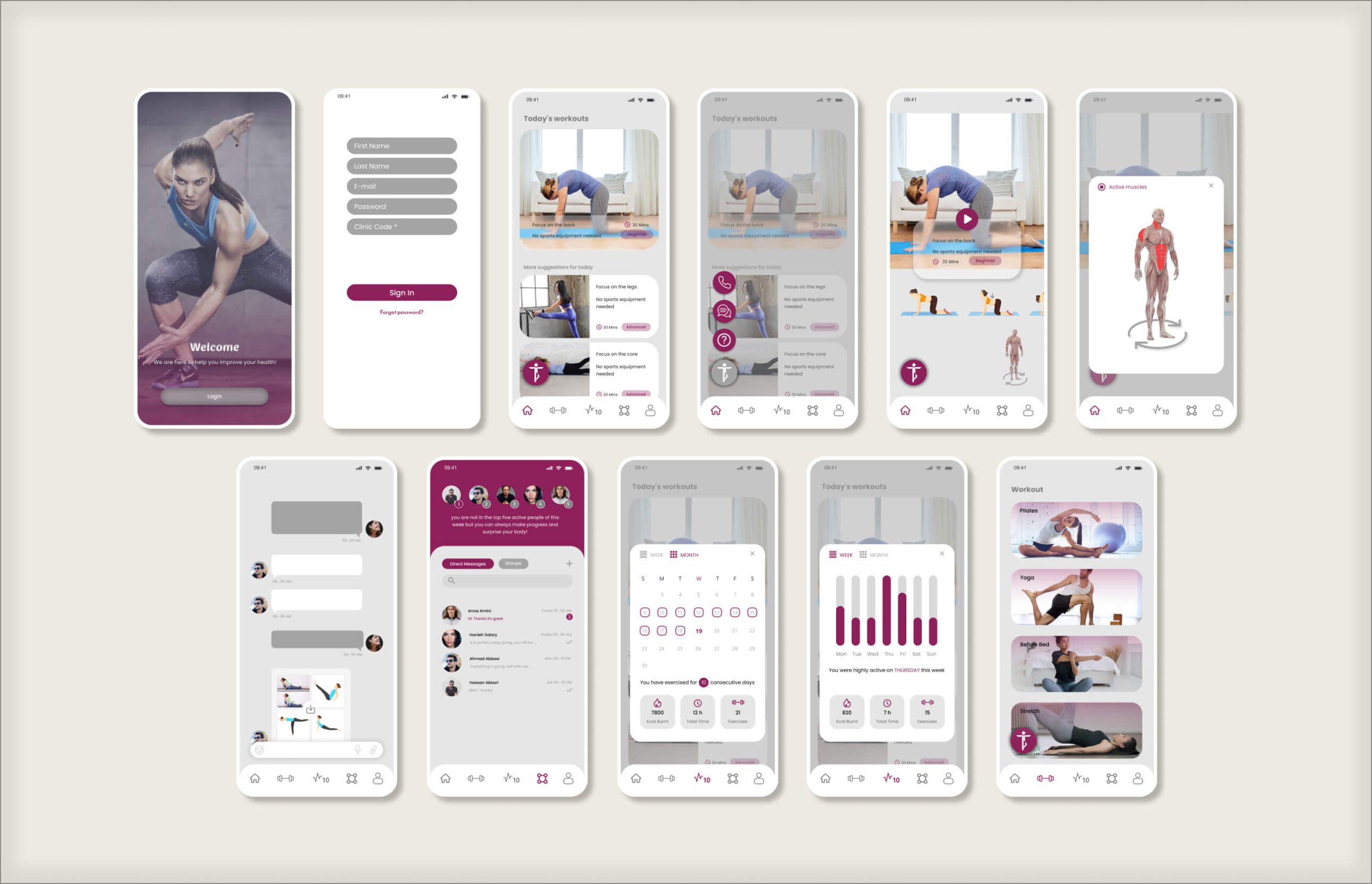
COFIT
An app for a local gym during Covid-19 lockdown
A mobile app for home-based corrective exercises, focusing on illustrating a clear explanation of correct workout execution and seamless interaction with trainers.
My Role – I worked as an individual designer on this project and I was responsible for the whole process from research to interface design.

Workouts – Designing features to illustrate movements details clearly
Challenge – Since fitness and especially corrective workouts can not be fully effective unless they are done consistently, the business owner sought an online solution to ensure that the gym’s clients could seamlessly continue their exercise routines with proper postures at home, thereby minimizing the risk of injury during home workouts.
In this project, my challenge was to gain insights into the desires and motivations of individuals regarding their adherence or discontinuation of home exercise plans, as well as their perspectives on using sport applications and the most effective ways of learning sports movements remotely. To address these challenges, initial ideas were proposed by gathering user opinions and analyzing their viewpoints. These insights were subsequently translated into applicable features during the design process.
Approach – Context mapping & Participatory design methods
Given my limited knowledge in sports, particularly in corrective exercises, and my unfamiliarity with various aspects of this field, I determined that applying context mapping methods would be beneficial in obtaining a more comprehensive understanding of the challenges at hand. I needed to actively involve users in the design process to gather rich qualitative data and foster a deeper understanding of their perspectives.
By utilizing context mapping and participatory design methods, I was able to gain valuable insights into the users’ experiences and emotions during exercise. This active involvement and collaboration with users throughout the design process ensures that users’ voices and needs are considered and incorporated into the final design solution. It allowed me to identify the specific challenges and pain points users encounter when performing workouts remotely from home.
Discover & Define – I generally needed insights into users’ workout habits and their level of familiarity and comfort with online applications. To collect primary data, I asked 6 gym clients to document their home exercise routines for a week and provide feedback on how they felt compared to their experiences at the gym. Additionally, I asked them to install a sports application on their mobile phones and follow their exercise plans for a week, documenting their impressions of using these applications.
During the context mapping process, I engaged with the users of corrective exercises remotely from home, aiming to understand their unique challenges and pain points. Through interview, observation, and interactive activities, I collected data on their exercise routines, motivations, frustrations, and aspirations. By involving the users directly, I could tap into their tacit knowledge and gain a deeper understanding of their needs and preferences.
By reviewing participants’ notes, I identified significant points regarding the limitations of sport applications and the concerns users encountered while exercising at home. To further explore these insights, I conducted interview sessions with both the users and the business owner, highlighting, organizing, and prioritizing the reasons for users’ reluctance to utilize sport applications. Moreover, I encouraged users to contribute their initial ideas to address these challenges, facilitating group discussions during meetings.


A part of user research – users noting down their P.O.V after using sport apps.
Problems – Main user concerns; reasons for avoiding fitness mobile applications
- lack of information about correct exercise postures
- confused about which muscles to focus on during each workout
- not having a competitive system to challenge yourself
- Not having enough equipment for exercise
- Worry about getting hurt while doing exercises
- Demotivated by not having a companion to make plans with


Final Design
Solutions – Ideas offering a better user experience
- Preview of the movements before starting the workout
- Designing exercises that require simple sport equipment
- Giving visual information of body muscles for better understanding of exercises
- Showing user’s progress and designing competitive features to keep users motivated



